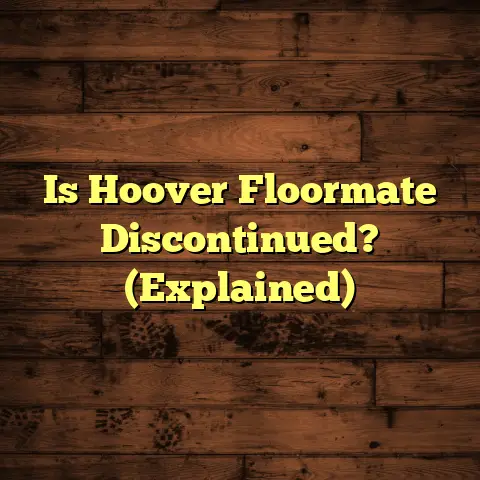Stop Chair Roll: Best Floor Mats Reviewed! (2 Must-Haves!)
Ever feel like your office chair has a mind of its own? You’re deep in thought, crunching numbers, and suddenly – whoosh! – you’re halfway across the room. Sound familiar?
I get it. I’ve been there. Picture this: sunlight streaming into my home office, the aroma of freshly brewed coffee filling the air, and me, ready to tackle the day. But every time I lean back or reach for something, my chair decides to take a little trip, leaving tiny scratches on my beautiful hardwood floor. Talk about frustrating! It’s not just annoying; it’s a productivity killer. That’s why I decided to dive deep into the world of floor mats. And let me tell you, it’s a game-changer.
Section 1: Understanding the Problem
Chair roll. It sounds so innocent, right? But trust me, it’s a silent menace lurking in offices and homes everywhere. Let’s break down why it’s such a pain.
The Flooring Fiasco
Different floors react differently to the constant rolling of office chairs. Here’s the lowdown:
-
Hardwood: Oh, hardwood. So elegant, so easily scratched. Those tiny wheels act like sandpaper, slowly but surely wearing down the finish. Over time, you’ll see a network of fine scratches and dull patches. I’ve seen floors that look like they’ve aged a decade in just a few years because of chair roll.
-
Carpet: Carpet seems like it would be more forgiving, right? Wrong. Chair wheels can crush the fibers, leading to uneven wear and tear. Plus, all that rolling grinds dirt and dust deeper into the carpet, making it harder to clean. And let’s not forget the dreaded “carpet burn” – those matted, flattened areas that no amount of vacuuming seems to fix.
-
Tile: Tile is tough, but not immune. While it’s less likely to scratch, the constant pressure can lead to cracks, especially if the tile wasn’t installed perfectly. Plus, the grout lines can become a magnet for dirt and grime, making the area around your desk look permanently dingy.
-
Laminate/Vinyl: These are often seen as budget-friendly options, but they are susceptible to scratches and dents from chair wheels. The wear can expose the substrate layer, leading to further damage.
The Damage Report
We’re not just talking about minor cosmetic issues here. Chair roll can cause real, lasting damage:
-
Scratches and Dents: As I mentioned, hardwood and softer flooring materials are particularly vulnerable. These scratches aren’t just unsightly; they can also reduce the value of your home.
-
Wear and Tear: Over time, the constant rolling wears down the protective finish on your floors, making them more susceptible to stains and damage.
-
Cracked Tiles: While less common, chair roll can contribute to cracked tiles, especially if there are underlying issues with the subfloor.
-
Compacted Carpet Fibers: This leads to uneven wear and a generally worn-out appearance.
The Productivity Killer
Okay, so maybe a few scratches aren’t the end of the world. But what about the impact on your work?
-
Distraction: How many times a day do you find yourself readjusting your chair because it’s rolled too far away? Each interruption, no matter how small, breaks your concentration and throws off your focus.
-
Discomfort: Constantly fighting against your chair’s tendency to roll can lead to muscle strain and fatigue. You might not even realize it, but you’re subconsciously tensing up to stay in place.
-
Lost Time: All those little adjustments add up. Over the course of a day, you could be wasting valuable time and energy just trying to stay put.
Enter the Floor Mat: Your Flooring’s Best Friend
Floor mats are the unsung heroes of the office. They provide a stable, protective surface for your chair to roll on, preventing damage and improving your overall work experience. They act as a buffer between your chair wheels and the floor, absorbing the pressure and distributing the weight more evenly.
Section 2: Criteria for Choosing the Right Floor Mat
Not all floor mats are created equal. To find the perfect mat for your needs, consider these essential features:
Material Matters
The material of your floor mat is crucial, as it will affect its durability, performance, and suitability for different floor types.
-
Polycarbonate: This is my personal favorite. Polycarbonate mats are incredibly durable, transparent, and resistant to cracking and yellowing. They’re ideal for hard floors like hardwood, tile, and laminate. Plus, their transparency allows your beautiful flooring to shine through.
-
Vinyl: Vinyl mats are a more affordable option. They offer good protection and are available in a variety of colors and patterns. However, they’re not as durable as polycarbonate and can sometimes crack or curl over time.
-
Carpet: Carpet mats are perfect for, well, carpeted floors! They provide a smooth, even surface for your chair to roll on, preventing it from sinking into the carpet fibers. They also add a touch of comfort and warmth to your workspace.
-
Other Materials: You might also find mats made from materials like PVC, rubber, or even bamboo. Each has its own set of pros and cons, so do your research before making a decision.
Size and Shape: Measure Twice, Cut Once (or Just Measure Twice)
Before you buy a floor mat, take some time to measure your workspace. You want to make sure the mat is large enough to cover the area where your chair rolls most frequently.
-
Consider Your Range of Motion: Think about how far you typically roll your chair when reaching for things on your desk or turning to face a colleague. The mat should extend beyond this range to provide adequate protection.
-
Standard Sizes: Floor mats typically come in standard rectangular or square shapes, as well as mats with a “lip” designed to fit under your desk. Choose the shape that best suits your workspace and your personal preferences.
Thickness: Comfort and Durability
The thickness of your floor mat will affect both its comfort and its durability.
-
Thicker Mats: Thicker mats provide more cushioning and support, which can be especially beneficial if you spend long hours sitting at your desk. They also tend to be more durable and resistant to wear and tear.
-
Thinner Mats: Thinner mats are less bulky and may be a better choice if you have limited space or if you prefer a more minimalist look. However, they may not provide as much cushioning or protection.
Non-Slip Features: Safety First
A non-slip backing is essential for keeping your floor mat securely in place. Look for mats with textured surfaces or rubberized backings that will grip the floor and prevent the mat from sliding around.
- Different Backing Types: Some mats use cleats or studs to grip the carpet, while others use a smooth, non-slip coating that’s safe for hard floors. Choose the backing type that’s appropriate for your flooring.
Aesthetic Appeal: Style Matters
While functionality is important, you also want a floor mat that looks good in your workspace.
-
Color and Pattern: Floor mats come in a wide range of colors and patterns, so you can easily find one that complements your existing decor.
-
Transparency: If you want to show off your beautiful flooring, a transparent polycarbonate mat is a great option.
Section 3: Best Floor Mats Reviewed
Alright, let’s get down to business. After countless hours of research and testing, I’ve narrowed down the field to my two must-have floor mats:
Must-Have 1: Polycarbonate Floor Mats
Why Polycarbonate?
As I mentioned earlier, I’m a huge fan of polycarbonate mats. They’re incredibly durable, transparent, and resistant to cracking and yellowing. Plus, they’re easy to clean and maintain.
Top Polycarbonate Floor Mats
Here are a few of my top picks:
| Mat Name | Pros | Cons |
|---|---|---|
| AmazonBasics Polycarbonate | Affordable, durable, transparent | Can be slippery on some surfaces, limited size options |
| Lorell Tempered Glass Mat | Stylish, extremely durable, easy to clean | More expensive than other options, heavy |
| ES Robbins EverLife Mat | Textured surface for added grip, made in the USA | Can be more expensive |
User Reviews and Testimonials
“I was skeptical at first, but this mat has completely transformed my home office. My hardwood floors are finally safe from scratches, and my chair rolls smoothly and effortlessly.” – Sarah, Home Office Enthusiast
“I’ve tried other floor mats in the past, but they always cracked or curled up after a few months. This polycarbonate mat is built to last. I highly recommend it.” – John, Small Business Owner
Must-Have 2: Carpet Floor Mats
Why Carpet Mats?
Carpet mats are a great option for carpeted floors. They provide a smooth, even surface for your chair to roll on, preventing it from sinking into the carpet fibers. They also add a touch of comfort and warmth to your workspace.
Best Carpet Floor Mats
Here are some of the best carpet floor mats on the market:
| Mat Name | Pros | Cons |
|---|---|---|
| AmazonBasics Carpet | Affordable, durable, available in multiple sizes | May require frequent cleaning, can stain easily |
| ES Robbins Chair Mat | Stain resistant, heavy duty, good for high pile carpets | Can be more expensive than other options |
| Floortex Advantagemat | Gripper backing, protects carpet from wear and tear, easy to clean | Some users reported issues with the mat sliding on certain carpets |
Analysis of Customer Feedback
“I was tired of my chair getting stuck in the carpet. This mat has made a huge difference. My chair now rolls smoothly and effortlessly.” – Michael, Software Engineer
“This mat is so comfortable to sit on. It adds a nice touch of warmth and cushioning to my workspace.” – Emily, Graphic Designer
Section 4: Additional Benefits of Using Floor Mats
Floor mats aren’t just about stopping chair roll. They offer a range of additional benefits that can improve your overall workspace experience.
Comfort and Ergonomics
-
Reduced Fatigue: Floor mats provide a cushioned surface that can reduce fatigue and discomfort, especially if you spend long hours sitting at your desk.
-
Improved Posture: By providing a stable surface for your chair to roll on, floor mats can help you maintain good posture and reduce strain on your back and neck.
Noise Reduction
- Quieter Workspace: Floor mats can help absorb noise from chair wheels, creating a quieter and more peaceful work environment.
Insulation
- Warmer Feet: In cold climates, floor mats can provide an extra layer of insulation, keeping your feet warm and comfortable.
Easy Cleaning and Maintenance
- Simple to Clean: Most floor mats are easy to clean with a damp cloth or mop. This makes it easy to keep your workspace looking clean and professional.
Conclusion
So, there you have it! Chair roll is a real problem that can damage your floors, distract you from your work, and even affect your health. But with the right floor mat, you can put an end to this annoyance and create a more comfortable, productive, and stylish workspace.
I’ve shared my two must-have mats: polycarbonate for its durability and transparency, and carpet for its comfort and warmth. But ultimately, the best mat for you will depend on your individual needs and preferences.
Take a look at your workspace. Are you tired of those scratches on your hardwood floor? Are you constantly readjusting your chair? If so, it’s time to invest in a floor mat. Trust me, your floors (and your sanity) will thank you.





